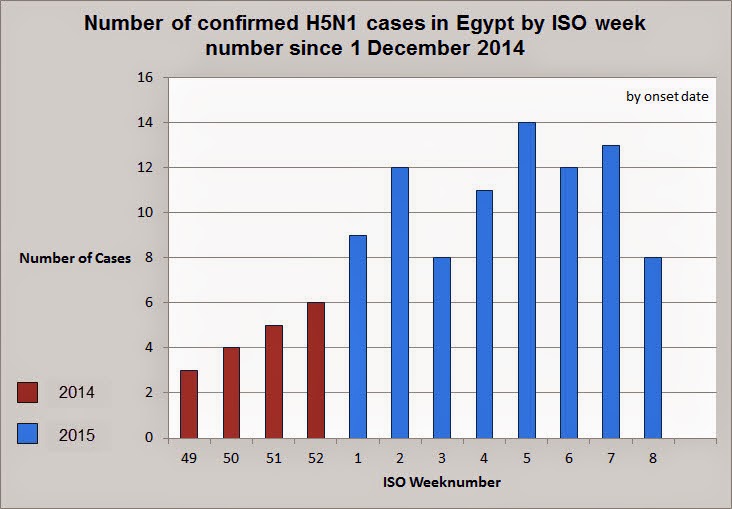To understand the confusion in the Egyptian case counts in the WHO table, it is necessary to consider the 2014 totals provided by WHO. The current WHO cumulative table reports 46 cases of H5N1 in 2014 with 31 cases from Egypt.[1] However, individual enumeration of WHO-confirmed H5N1 cases based on line lists in the monthly risk assessments shows a total of 52 H5N1 cases in 2014 (based on onset dates), with 37 of these reported from Egypt.[3] The table below identifies the distribution of WHO-confirmed H5N1 from Egypt by each of the monthly summaries for 2014 through the most recent assessment posted on March 3.[4]
Further complicating the confusion is the Regional Office Eastern Mediterranean (EMRO) of WHO. On March 21, 2015 EMRO published a table that only identifies 29 H5N1 cases from Egypt in 2014.[5] The EMRO data has a 8-case discrepancies with the line list of confirmed cases published by WHO.
In summary, Egypt experienced a total of 37 confirmed H5N1 in 2014 based on onset dates. In 2015, 82 WHO-confirmed cases with onsets dates before February 20 have occurred in Egypt. Since February 20, there have been at least 22 additional official cases from Egypt with onset dates on or after 20 February. Another 3 H5N1 cases have been also reported from Egypt but are not yet corroborated.
Until we get the numbers right for H5N1 in Egypt from 2014, we can’t correct the numbers for 2015. Based on the above discussion, through March 25, 2015 there have been 107 H5N1 cases in Egypt with symptom onset since January 1, 2015.
1. Cumulative
number of confirmed human cases for avian influenza A(H5N1) reported to WHO, 2003-2015


